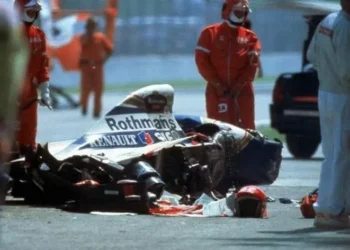Jeddah presents numerous challenges for Formula 1 drivers and cars. The track features strong winds and fast-exit blind corners, requiring drivers to use the kerbs extensively. Even top drivers like Max Verstappen and Sergio Perez struggled, with the RB20 car proving difficult to control on the kerbs. However, Red Bull seems to have an advantage over other teams based on long-run times.
Verstappen was half a second ahead of Perez in long-run races, although this difference was partly due to traffic and the higher number of laps completed. Perez showed promising pace on fast laps, especially considering his previous success in Jeddah as pole position and race winner.
Ferrari, Mercedes, and McLaren did not conduct comparable programs. Ferrari seemed to be using their engines in even lower power modes than other teams, following a similar approach to last year’s practice sessions. Carlos Sainz, who was not feeling well, was on average 0.7 seconds behind Verstappen in his long-run race. Some of this difference may be attributed to engine modes, and Sainz’s performance improved as the race progressed.
Mercedes faced limitations in their practices, as both George Russell and Lewis Hamilton spent a lot of time adjusting the car setup to deal with the unstable rear. Russell had to pit to create a gap between him and Hamilton. Hamilton also had a moment where he corrected a slide, accidentally triggering the pit lane speed limiter. As a result, Mercedes completed only seven laps in long-run races.
In terms of classification, Russell showed a promising pace, while Hamilton struggled with confidence in the rear of the car. McLaren had a discreet Friday, with Oscar Paistri and Lando Norris doing long runs with different tire compounds. The hard tire showed good performance, as demonstrated by Alex Albon’s tenth best average time in the Williams. The race is expected to follow a one-stop strategy, with little tire degradation.
As for Aston Martin, Fernando Alonso set the fastest time in fast laps. However, Alonso’s position at the top of the time sheets is unlikely to accurately represent the team’s competitiveness. Aston Martin’s long run pace is similar to their performance in Bahrain, while their pace in fast laps was boosted by a higher engine setup.
Further down the grid, Red Bull had a similar performance to Bahrain with soft tires, averaging about 0.7 seconds slower than Leclerc. Haas and Sauber teams were very close on medium tires, approximately 0.2 seconds faster than the Alpines.








